
While the need for services like drivers, servers, nurses, and law enforcement hasn't changed over the years, the way those services look have changed dramatically.
LifeDaily Video of the Day
Take a look at the incredible evolution of uniforms that has occurred over the past few decades…
Nurse
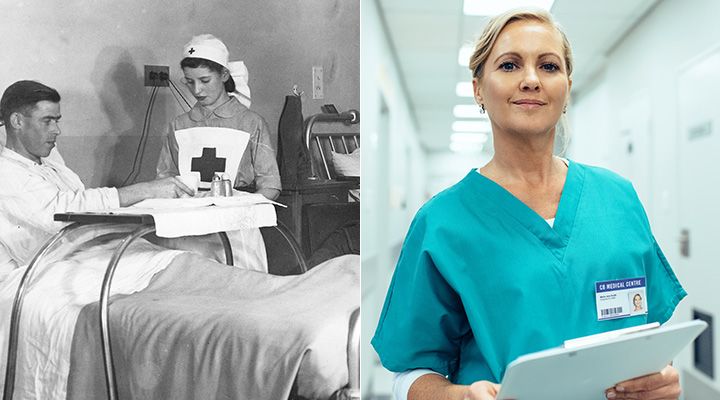
In the 1950s, nursing was a growing profession and the uniforms were simplified to easy-to-clean white dresses and aprons. The sleeves were shortened and caps were either pill-box style or pointed versions. Over the years, nursing uniforms were replaced with scrubs that are easier to clean and offer even more mobility and comfort.
UPS
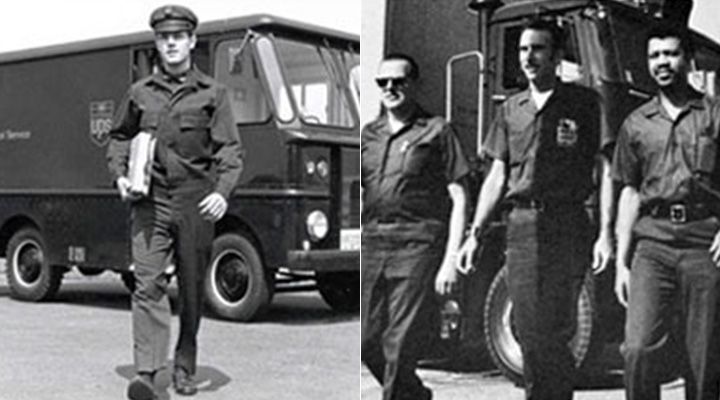
UPS released their iconic brown uniform in 1925, which featured an Eisenhower-style jacket and a police-style cap. The uniform stayed that way for about 50 years. Now, the uniforms have simplified to plain brown pants or shorts, a button-down collared shirt, and an optional brown cap.
McDonald's
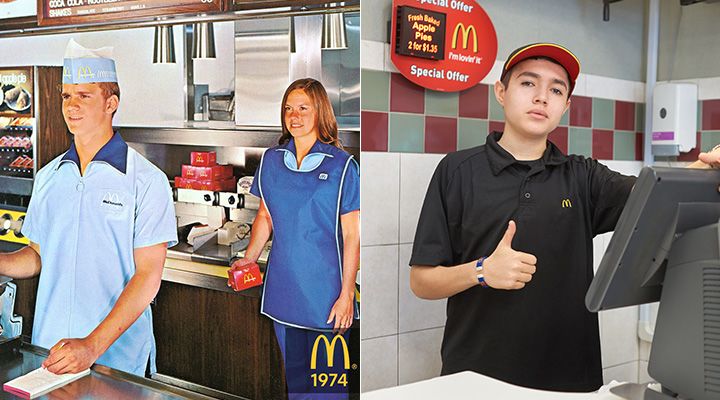
At the beginning of the chain's start in the 1950s, employees wore crisp white pants, plain white short-sleeved collared shirts, and a white paper cap. Over the years, McDonald's uniform has transformed several times. In recent years, the uniform has been updated to plain grey pants, t-shirts, aprons, and hats with small yellow accents.
Doctor

Up until the late 19th century, doctors almost always wore formal black clothing since any medical issue was serious and life-threatening. At the beginning of the 20th century, doctors began wearing their iconic white lab coats and white clothing as a symbol of purity and proof of cleanliness. While doctors still wear white coats today, some choose to wear more casual scrubs or dress pants and shirt to not intimidate patients.
Delta Airlines

Delta's first uniforms featured simple beige jackets, black pencil skirts, and pillbox hats like almost every other commercial airline at the time. Over the years, Delta's uniforms have changed countless times. Now, Delta employees wear a line of purple and red dresses and suits designed by Zac Posen to stand out among the plain uniforms worn by other carriers.
Waitress
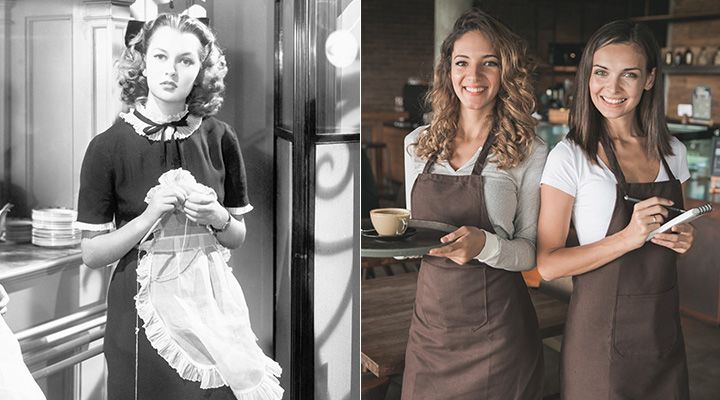
For decades, waitress uniforms were designed to attract male customers and were inspired by maid uniforms. They typically featured a plain or gingham short-sleeved dress and a white apron. Today, however, waitresses and waiters wear matching uniforms that usually includes dark pants, a plain white top, and a dark apron.
Amtrak
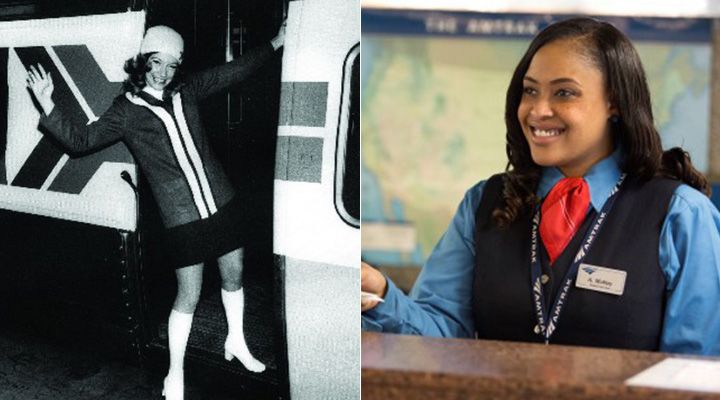
Throughout the 1970s, Amtrak employees had the option of wearing a variety of uniform pieces. Most pieces, like vests, pants, skirts, and even hot pants were bright red with blue or white accents. Today, Amtrak uniforms feature navy pants and vests, a lighter blue button-down shirt, color-coded epaulets, and special iPhone pockets that employees use to check guests in.
Police
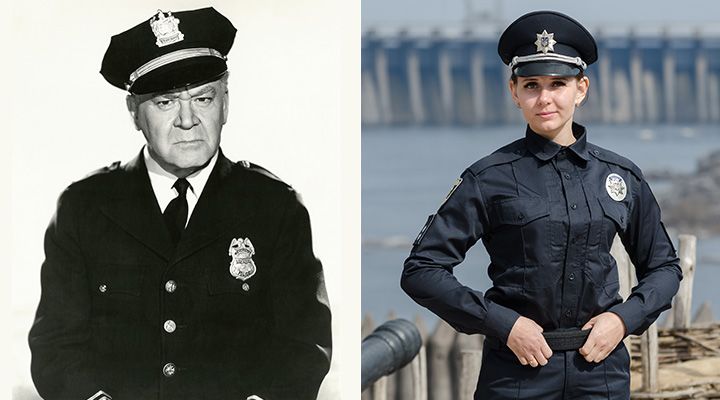
Early law enforcement officers around the country wore formal navy uniforms that were actually surplus Union Army uniforms left over after the Civil War. Over the years, police uniforms have drastically changed. Today, police departments around the country are choosing all-black uniforms that feature belt holsters, combat-style boots, police caps, and small body cameras pinned to shirts.
Firefighter
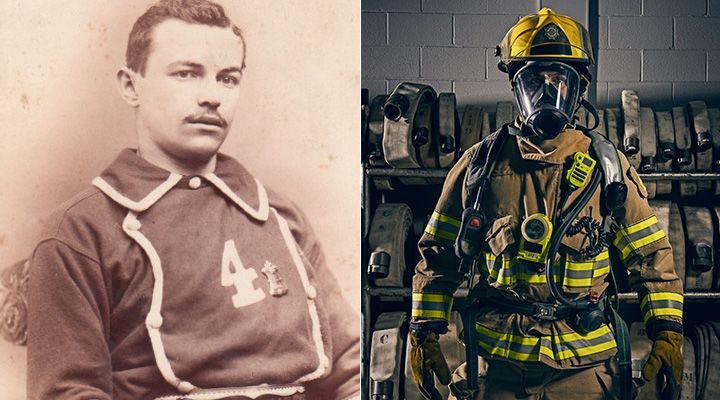
Originally, firefighters were forced to fight deadly flames in nothing but thick wool pants and shirts and a rubber slicker on top because the materials were mildly resistant to water and flames. Today, however, firefighters are equipped with helmets, visors, masks, air tanks, heavy-duty boots and gloves, as well as a jumpsuit and jacket made of flame-resistant and moisture-resistant fabrics.
Greyhound Bus Driver
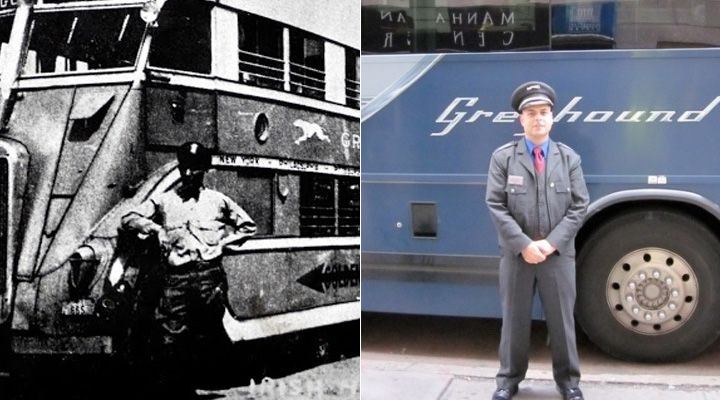
In the 1930s, bus drivers wore uniforms that featured tall leather boots, pants that were tucked into the boots, and a belted, double-breasted jacket. Today, Greyhound uniforms feature matching grey pants and jackets along with a bright blue button-down shirt and a red tie.
FedEx
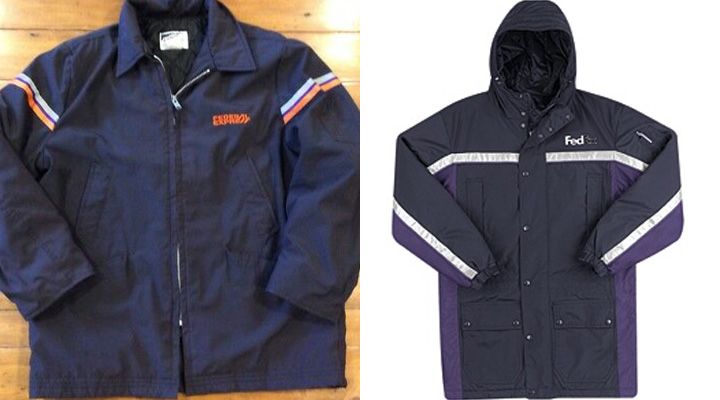
When FedEx was still Federal Express, employees wore navy uniforms designed by Stan Herman. Jackets were embroidered with the Federal Express logo and small stripes on each sleeve. Today, the FedEx uniform feature plain black pants or shorts and black and purple polo shirts with the FedEx logo printed on the chest.
USPS
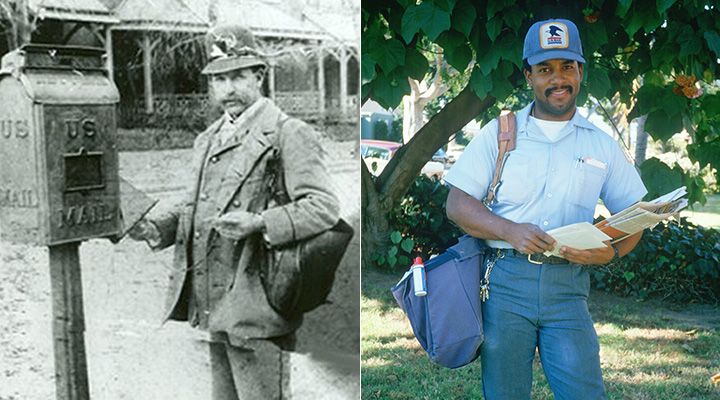
In the late 1800s, postmen wore simple military-inspired walking suits made of a blue-gray fabric called 'Cadet Gray'. The uniform also featured a matching cap and an optional cape. Over the years, the uniform has changed drastically to adapt to different climates and fashion changes. Today, USPS employees are provided with a wide variety of navy blue gear including pants, shorts, jackets, and short-sleeved button-down shirts.
Zookeeper

In the early days of modern zoos, zookeepers often wore military-inspired uniforms with peaked caps. In recent years, however, zookeeper uniforms are more practical and inspired by animal researchers and conservationists. Most zoo staff now dress in khaki shirts, cargo pants or shorts, and terrain boots.
United Airlines

In the late 30s, United Airlines had a summer uniform that featured a belted white crepe dress with a navy blue flannel jacket. The uniform included a matching white crepe hat and navy and white pumps. In early 2019, United Airlines debuted their newest uniform, which was designed by Tracy Reese. It features navy suits, dresses, and skirts with color accents that depend on the employee's job.
Butler
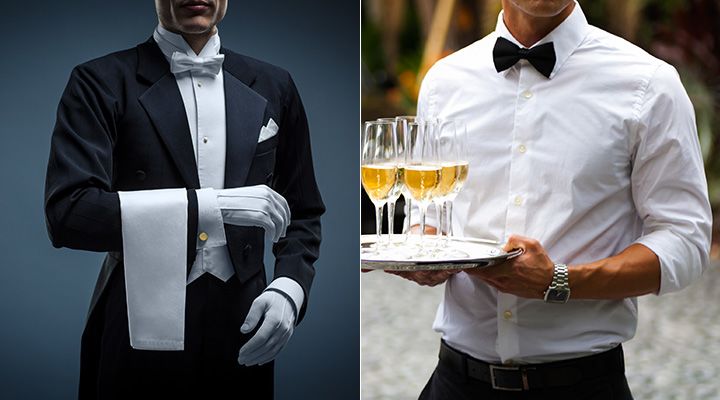
Throughout the 1900s, butlers were often required to wear formal suits along with formal accessories like ties, bowties, gloves, and hats to separate them from junior servants. Today, however, butlers are often referred to as estate managers and wear much more casual uniforms like polo shirts and slacks. Full suits are typically only required now on special occasions and events.
EMT
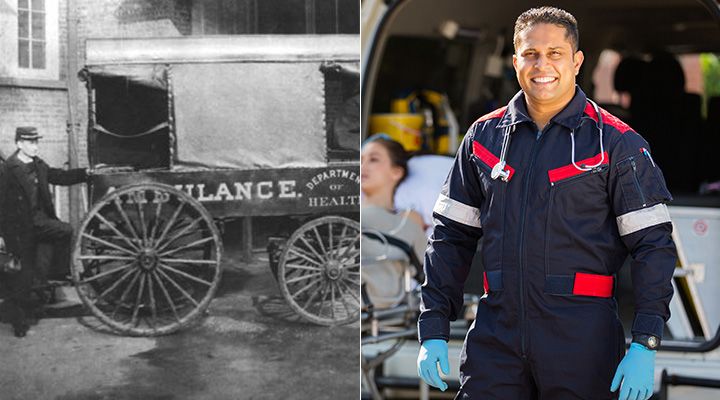
The first horse-drawn ambulance service began in June of 1869 in New York City. At the time, the ambulance was staffed with a hospital intern and teamster who wore standard suits and dark wool coats and carried a relatively small first-aid kit. Now, EMT personnel wear heavy duty boots, stain- and water-resistant pants and shirts, as well as high visibility jackets.
Umpire

Throughout the first half of the 20th century, baseball umpires wore formal black sports jackets, white button-down shirts, a dark tie, and dark pants typically made of wool no matter what the temperature was. Today, baseball umpires wear gray pants, black baseball caps, and black polo shirts with their individual major league number.
Ballerina
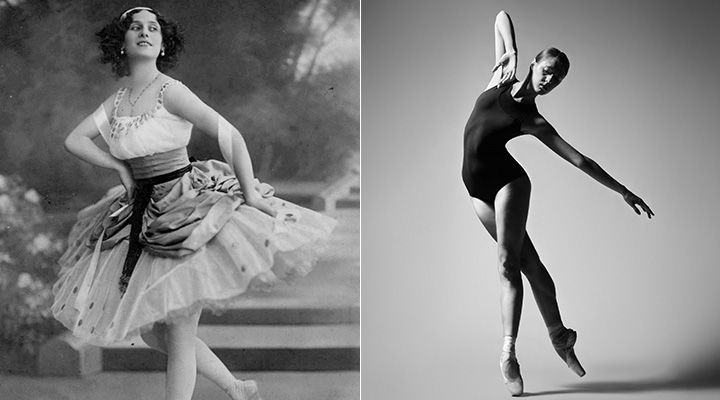
In the late 19th and early 20th centuries, ballerinas were forced to wear skirts that were so long, heavy, and voluminous that they severely restricted the dancer's range of movement. Soon after, however, skirt lengths were raised to the knee to show off pointe work. Now, ballerinas wear costumes that are more form-fitting and made with modern stretchy materials that are more comfortable and allow for unobstructed movement.
Dunkin Donuts
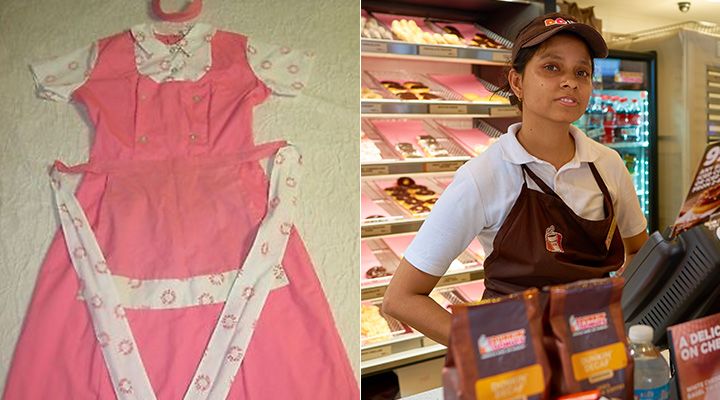
In the 1970s, waitresses at Dunkin Donuts wore a bright pink mini dress along with a matching pink apron and headband. Under the dress, waitresses wore a white collared shirt with 'Dunkin Donuts' printed in circular pink text. Today, employees wear brown pants to match the brown apron and visor. For shirts, employees can choose between plain white polos or company-issued graphic t-shirts.
Park Ranger
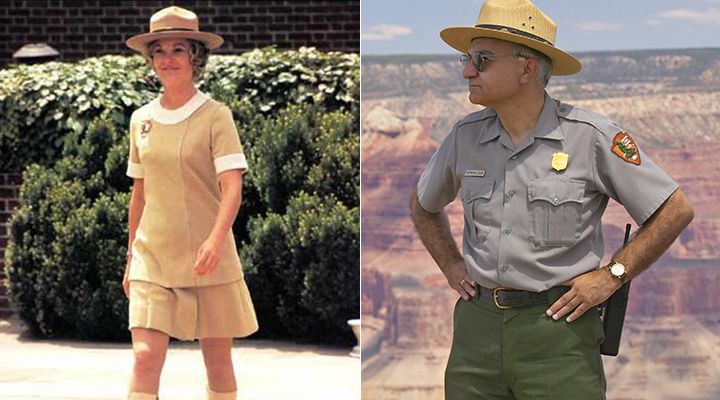
Before the late 1970s, female park rangers were forced to wear short skirts and dresses with impractical heels or go-go boots. In the spring of 1978, however, that changed when women were allowed to wear the same uniform as men. Now, both male and female park rangers wear green or khaki shorts, trousers, short sleeve shirts, and long sleeve shirts. Their uniforms also feature boots, vests, ranger hats, and belt holsters.